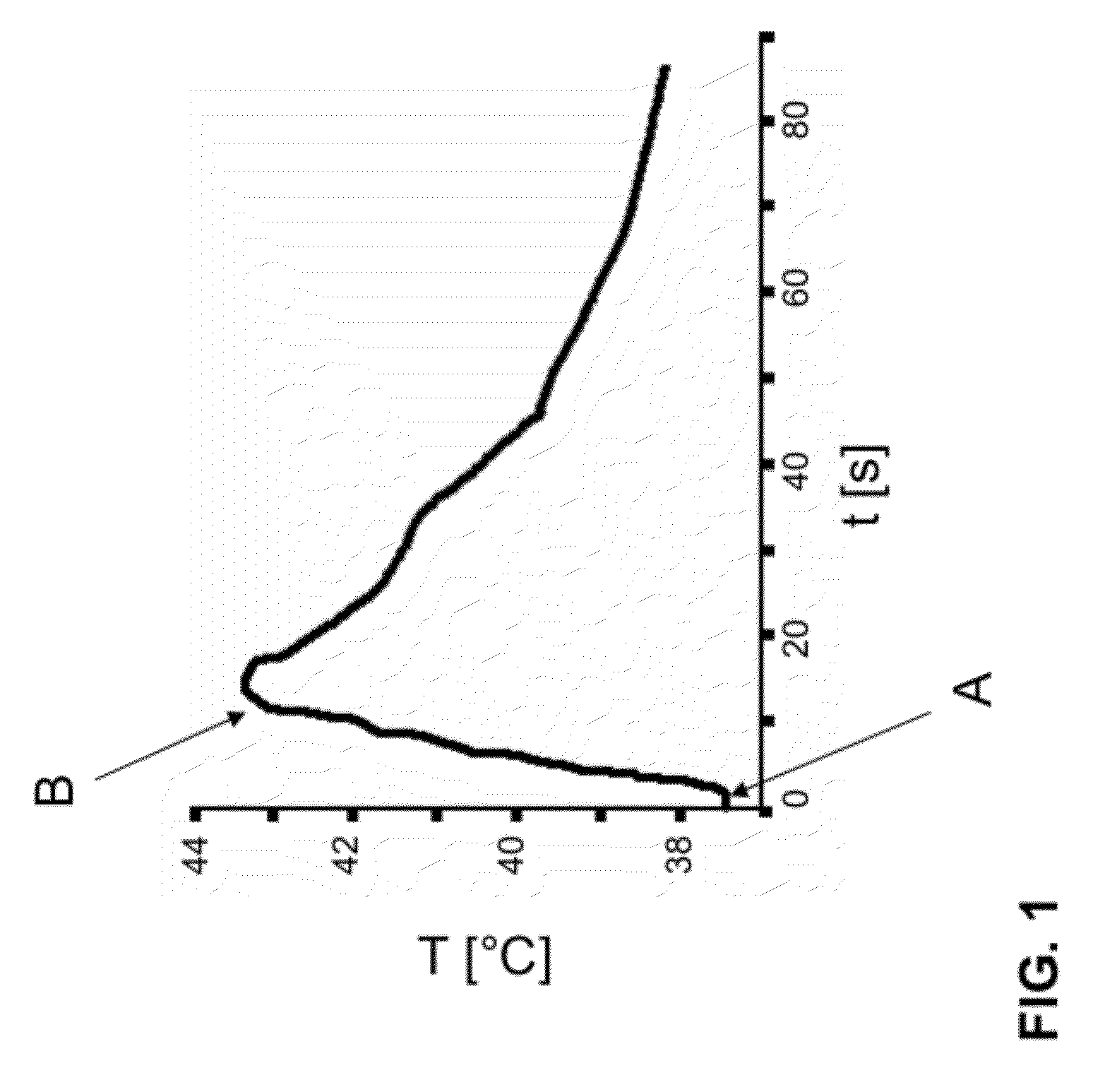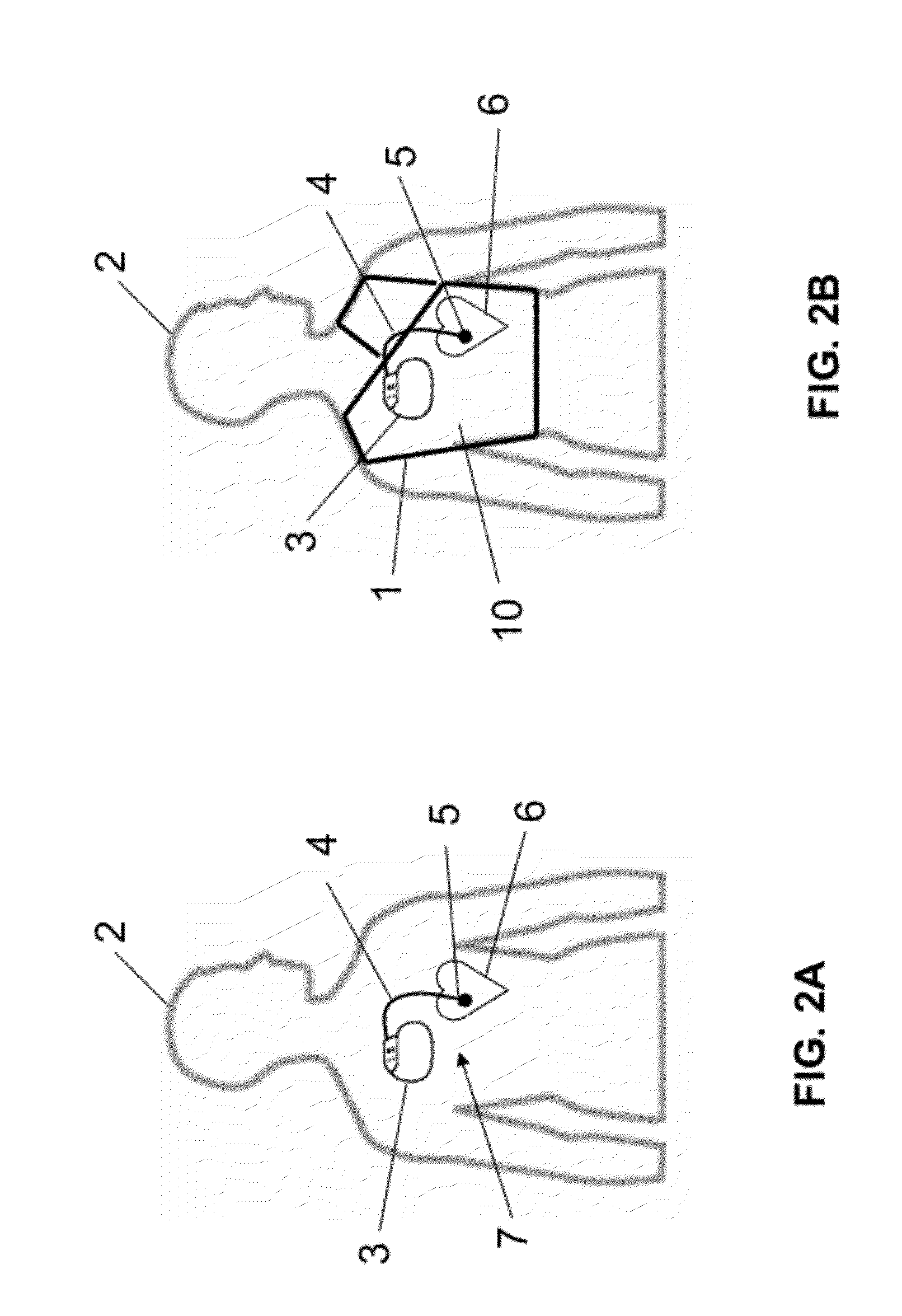Shielding apparatus and shielding structures for magnetic resonance imaging and method for operating a magnetic resonance imaging scanner
a shielding apparatus and magnetic resonance imaging technology, applied in the field of medical technology, can solve the problems of inability to protect the patient, thermal damage to the surrounding tissue, and inability to operate with preset starting parameters, so as to improve the imaging quality, prevent excess heating of the patient's body tissue, and ensure the shielding effect. the effect of safety
- Summary
- Abstract
- Description
- Claims
- Application Information
AI Technical Summary
Benefits of technology
Problems solved by technology
Method used
Image
Examples
Embodiment Construction
[0049]FIG. 1 shows a diagram of a typical temperature curve of the electrode tip in an implanted conventional pacemaker / ICD electrode during an MRI examination. The abscissa indicates the time (t) in seconds and ordinate the temperature T in ° C. The cause for the rise in the temperature is the electromagnetic interference (generation of induction currents). The temperature of the electrode tip thus rises rapidly when the radio frequency alternating field is switched on at the time A, with the slope of the temperature rise and the maximum temperature that can be achieved being highly dependent on the spatial position of the electrode with respect to the alternating field. In the example shown, the temperature rises to above 43° C. After the alternating field is switched off at the time B, the electrode tip cools off relatively quickly due to the relatively low thermal capacity. Because of the high temperature that the electrode tip reaches, thermal damage to the surrounding tissue c...
PUM
 Login to view more
Login to view more Abstract
Description
Claims
Application Information
 Login to view more
Login to view more - R&D Engineer
- R&D Manager
- IP Professional
- Industry Leading Data Capabilities
- Powerful AI technology
- Patent DNA Extraction
Browse by: Latest US Patents, China's latest patents, Technical Efficacy Thesaurus, Application Domain, Technology Topic.
© 2024 PatSnap. All rights reserved.Legal|Privacy policy|Modern Slavery Act Transparency Statement|Sitemap



